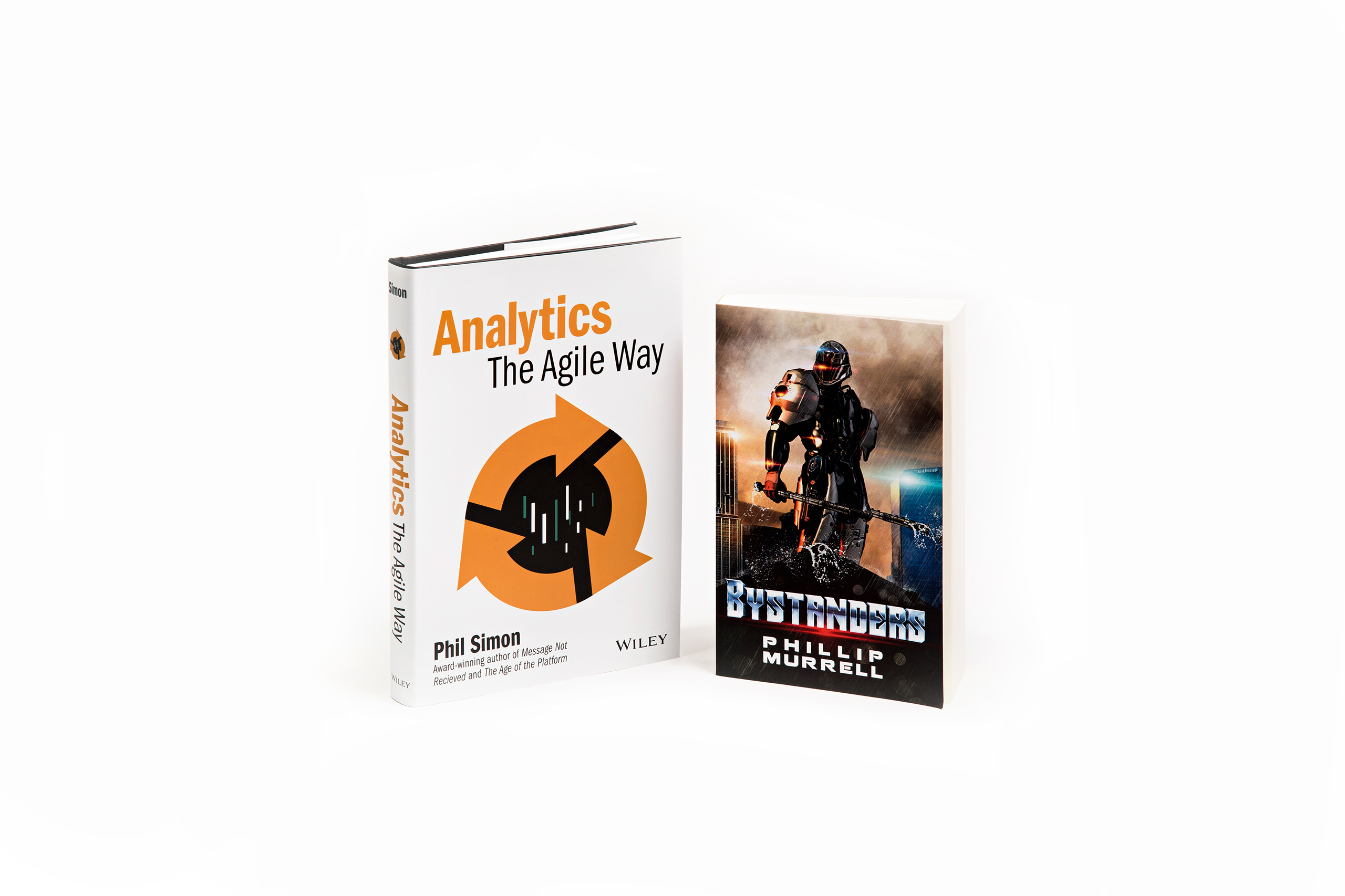
On your nightstand
One spins a tale of fantasy; the other speaks of real life. Together, these two W. P. Carey authors tell us about superheroes in altogether different realms.
Discover new business books by W. P. Carey authors
One spins a tale of fantasy; the other speaks of real life. Together, these two W. P. Carey authors tell us about superheroes in altogether different realms.
In Bystanders, Phillip Murrell (MBA '18) chronicles the exploits of a superhero/vigilante named Votary as he attacks the criminal element in an imaginary place with a limited police force. Set in the fictional southwestern U.S. town of Colberton, Murrell tells the story through the eyes of those living in this 200,000-resident community, a wide-ranging crowd that includes reporters, police officers, paramedics, surgeons, crime bosses, drug dealers, and teenage fan boys.
Murrell, an active duty officer in the U.S. Army, draws on his 15 years in the military as he takes readers through over-the-top battles played out in the city's back alleys and residential streets. Key among the characters is Claire Kennedy, a reporter looking to win ratings for her station and points with her boss by unmasking the mysterious, battle-clad avenger. Her investigation quickly reveals that real-life vigilantes do not reside in the fantasy worlds to which comics and films allude.
Murrell, who got the idea for the book during his third Army deployment in Afghanistan, keeps the action flowing throughout and gives the reader a massive battle to feast on at its conclusion.
Still, he leaves the identity of who is behind the heavily armored figure a closely held secret not yet to be revealed.
That is, at least in the first volume of the four-part, self-published book, which was released in June 2017. The second volume, Bystanders II: Trophy Hunters, came out last November and explores the backstory about Votary. Murrell says he hopes to publish the final volume by year's end.
In Analytics: The Agile Way (Wiley), Department of Information Systems Lecturer and award-winning author Phil Simon describes how successful organizations are using analytics to make better decisions.
Via case studies including Google and Nextdoor, Simon demonstrates how progressive organizations gather and act on data in incremental ways. This is in stark contrast to traditional analytic approaches.
"The book makes the case that traditional ways in which companies use data and analytics simply don't work anymore," says Simon. "The world moves too fast these days." In his eighth book, Simon argues for a more nimble approach - one that breaks down a company's wants into more digestible bites.
Teaching business writing with the 'Toms effect'
The required reading material Professor of English Elizabeth Ferszt had been using for her ENG 302: Business Writing course - a requirement for W. P. Carey students - was "enormous; over 600 pages; more than $100; and so stunningly boring." It didn't seem like the kind of material she should be teaching students at the nation's most innovative university, three years running. "I take very literally our innovation culture here," she says. So, Ferszt decided to ditch the traditional textbook and try something new.
Now she assigns her ENG 302 students, "Start Something That Matters," by Blake Mycoskie, the founder of Toms Shoes. What better book to use for her course, Ferszt thought, which is specifically geared toward W. P. Carey School of Business students. But what does a book about entrepreneurs have to do with teaching students how to write?
She didn't want to teach students how to write memos, Ferszt says. She wanted to teach them how to use writing to do something. For every chapter, Ferszt assigned reading questions, which, she says, at first "appear to be traditional reading questions in terms of content, but what they really do is generate a lot of fast, specific writing.
"I think that's one of the values of business writing, is you've got to go fast, and it has to be good. And how do you do that? Well, you don't talk around it, you talk right at it. And you say exactly what this thing is about, and you pay attention to details."
Read about how an economics grad launched a project to help her native Peru: a boutique hotel and community center inspired by the TOMS business model.
Latest news
- Pop culture is key to effective teaching
How a management and entrepreneurship professor uses Ted Lasso and other pop-culture touchstones…
- Artificial intelligence in business master's degree helps Nathan Merriman combine business strategy with technology
Nathan Merriman (MS-AIB '25) had been working in business for a few years when he learned about…
- How the Executive MBA empowered Scott Gates to be a mission-driven leader
Scott Gates (BS Marketing '04, Executive MBA '15) had a very positive experience during his…